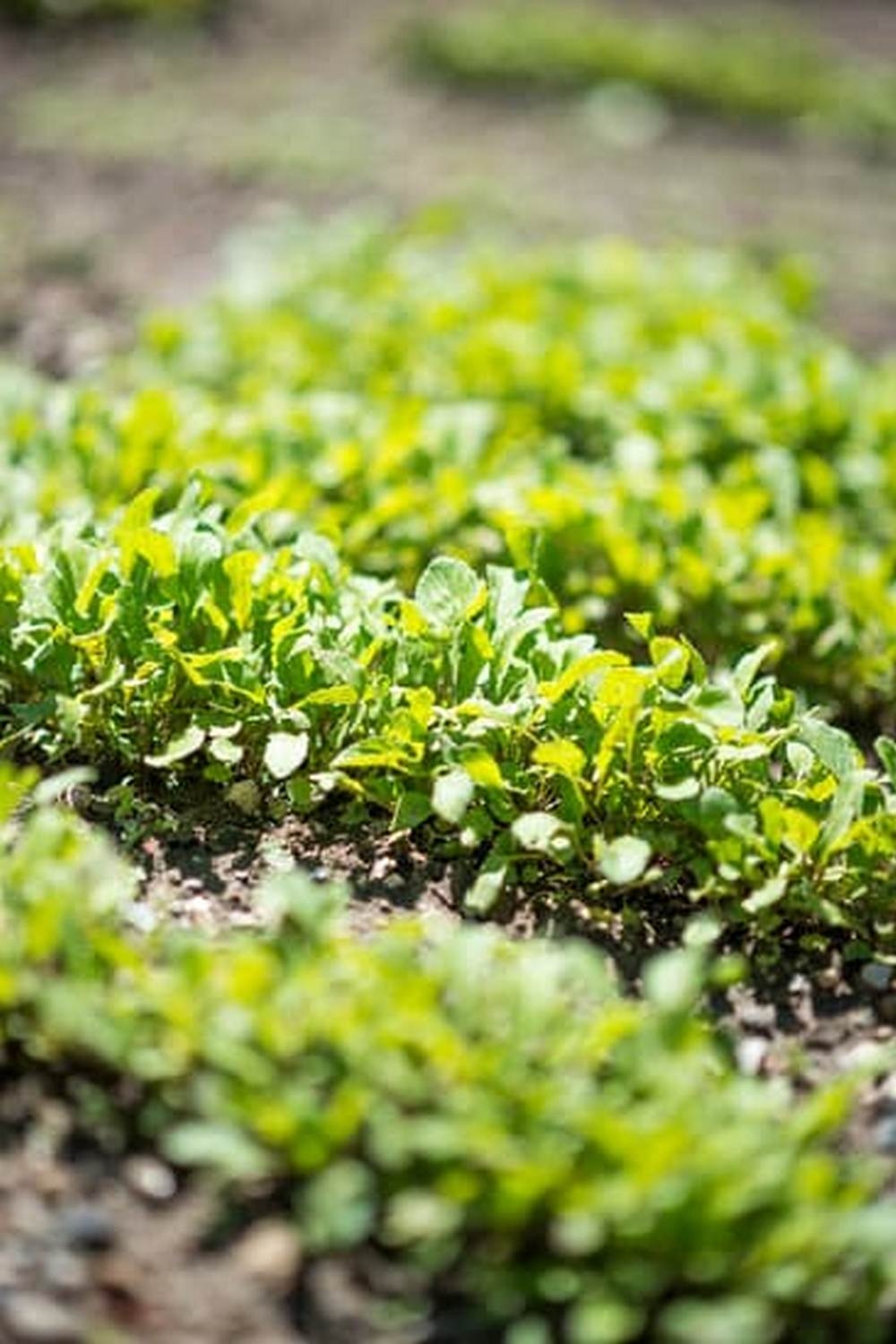Can concrete blocks be used for vegetable gardens? This article will explore the possibilities of utilizing concrete blocks to create productive and efficient vegetable gardens.
Using concrete blocks for vegetable gardens can offer a range of benefits, including durability, versatility, and ease of maintenance. By building raised garden beds with concrete blocks, gardeners can have better control over soil quality, drainage, and pest prevention.
In addition to exploring the concept of using concrete blocks for vegetable gardens, this article will provide detailed instructions on selecting the right materials, preparing the area, building the garden bed, planting vegetables, and maintaining the garden for long-term sustainability. Whether you are a beginner or experienced gardener, incorporating concrete blocks into your vegetable garden could be a game-changer in terms of productivity and convenience.
Materials Needed
When creating a vegetable garden using concrete blocks, there are specific materials that you will need to ensure the success of your project. Below is a list of essential items that you can gather before starting the construction process:
- Concrete blocks: The main building material for your raised garden bed. Make sure to choose blocks that are sturdy and designed for outdoor use.
- Topsoil or potting mix: High-quality soil is crucial for the health and growth of your vegetables. Look for organic options or create your own nutrient-rich mix.
- Gloves and protective gear: Working with concrete blocks can be heavy and abrasive, so it’s important to protect your hands and skin while handling them.
- Shovel or spade: Essential tools for digging up the area where you plan to place your garden bed and spreading out the soil evenly.
- Tape measure: To ensure that your garden bed is built to the desired dimensions and level properly.
- Watering can or hose: You will need a reliable watering system to keep your vegetables hydrated, especially during dry spells.
Having these materials on hand before you begin constructing your concrete block vegetable garden will make the process smoother and more efficient. Once you have everything ready, you can move on to selecting the right concrete blocks and preparing the designated area for your new garden bed.
Remember to take into consideration factors such as sunlight exposure, drainage, and accessibility when planning the layout of your vegetable garden with concrete blocks. With careful preparation and proper materials, you can create a thriving space for growing fresh produce right in your backyard.
Choosing the Right Concrete Blocks
Concrete blocks are a popular choice for creating raised vegetable gardens due to their affordability, durability, and ease of use. When it comes to choosing the right concrete blocks for your vegetable garden, there are a few key factors to consider. The first consideration is the type of concrete block you want to use. There are different types available, including standard concrete blocks, interlocking concrete blocks, and decorative concrete blocks.
Standard concrete blocks are the most basic option and are typically used for simple garden bed constructions. They are sturdy and provide a stable base for your vegetable garden. Interlocking concrete blocks, on the other hand, offer added stability as they fit together like puzzle pieces, reducing the need for mortar or other adhesives. Decorative concrete blocks can add aesthetic appeal to your garden while still providing functionality.
When picking the best concrete blocks for your vegetable garden, make sure to choose ones that are durable and have good drainage properties. Concrete blocks with holes or spacing in between the bricks allow excess water to drain from the soil, preventing waterlogging and root rot. Additionally, consider the size of the blocks and how they will fit together to create a strong and stable raised bed structure.
| Type of Concrete Blocks | Advantages |
|---|---|
| Standard Concrete Blocks | Affordable and sturdy option for basic garden beds |
| Interlocking Concrete Blocks | Provides added stability without needing mortar |
| Decorative Concrete Blocks | Adds aesthetic appeal while maintaining functionality |
Preparing the Area
When considering using concrete blocks for a vegetable garden, the first step is to prepare the area where the garden will be situated. This process involves clearing the space of any debris, weeds, or rocks that could hinder plant growth. It is essential to create a clean and level foundation for your vegetable garden to ensure proper drainage and stability for the concrete blocks.
One important aspect of preparing the area for a concrete block vegetable garden is to ensure that the ground is level. Uneven ground can lead to water pooling in certain areas of the garden bed, which can cause root rot in your plants. You can use a rake or shovel to level the ground, making sure it is flat and even before proceeding with placing the concrete blocks.
Clearing the space for your vegetable garden also involves assessing factors such as sunlight exposure and proximity to water sources. Vegetables generally require at least 6-8 hours of sunlight daily, so choose a location that receives adequate sunlight throughout the day. Additionally, having access to water for irrigation is crucial for the success of your vegetable garden. Ensuring these factors are considered during the area preparation stage will set your concrete block vegetable garden up for success.
| Aspect | Consideration |
|---|---|
| Ground Level | Ensure it is flat and even for proper drainage |
| Sunlight Exposure | Choose a location with at least 6-8 hours of sunlight daily |
| Water Source | Proximity to water access for irrigation needs |
Building the Garden Bed
Building a raised garden bed using concrete blocks is a popular choice for many gardeners due to its durability, ease of construction, and versatility. These sturdy blocks not only provide a stable structure for the garden bed but also create a stylish and modern look to the vegetable garden. When properly constructed, concrete block garden beds can last for years, making them a sustainable option for growing vegetables.
Choosing the Right Blocks
When selecting concrete blocks for your vegetable garden bed, it is essential to choose solid blocks that are free from cracks or damage. Opt for blocks that are specifically designed for outdoor use and can withstand exposure to moisture and soil. Additionally, consider the size of the blocks to ensure they provide enough height for your raised bed while allowing proper drainage.
Building the Garden Bed
To construct a raised garden bed using concrete blocks, start by laying out the first row of blocks in the desired shape and size. Ensure that the corners are square by using a carpenter’s square or measuring diagonally from corner to corner. Stack additional rows of blocks on top of each other until you reach the desired height for your garden bed. Stagger the blocks in each row to create stability and strength in the structure.
Tips for Stability and Drainage
To enhance stability, consider filling the cavities of the concrete blocks with soil or gravel as you build up each row. This will help anchor the blocks in place and prevent shifting over time.
Additionally, installing a drainage system at the bottom of the garden bed can help prevent waterlogging and promote healthy root growth for your vegetables. Place a layer of gravel or rocks at the bottom of the bed before adding soil to improve drainage and prevent water buildup.
Planting Vegetables
Spacing Guidelines
When planting vegetables in a concrete block garden, it is important to space them properly to ensure they have enough room to grow and receive adequate sunlight. For example, tomatoes should be spaced about 18-24 inches apart to allow for proper airflow and prevent diseases.
Leafy greens like lettuce can be planted closer together, with about 4-6 inches between each plant. Root vegetables such as carrots should be spaced at least 2 inches apart to allow room for the roots to develop fully.
Vertical Planting
In addition to spacing considerations, vertical planting can also be utilized in a concrete block garden to maximize space and increase yield. Vining plants like cucumbers, peas, and beans can be trained to grow up trellises or cages made from other materials like wood or wire. This not only saves space but also makes harvesting easier.
Companion Planting
Another strategy that can be beneficial in a concrete block vegetable garden is companion planting. Certain plant combinations can help deter pests, improve pollination, or enhance flavor. For example, planting basil near tomatoes can help repel insects that damage tomato plants.
Carrots and onions are also known to benefit from being planted together as they deter pests from each other. By incorporating companion planting techniques into your vegetable garden planning, you can create a more harmonious and productive growing environment.
Maintenance Tips
Maintaining a vegetable garden is crucial to ensuring a bountiful harvest and healthy plants. Proper care can help prevent diseases, pests, and nutrient deficiencies that may hinder the growth of your vegetables. Here are some essential maintenance tips for keeping your concrete block vegetable garden thriving:
- Watering: Adequate watering is essential for the health of your vegetable plants. Make sure to water consistently, especially during hot and dry periods. Monitor the moisture levels in the soil by checking the top few inches with your finger. Water deeply to encourage roots to grow deeper into the soil.
- Fertilizing: Providing adequate nutrients to your vegetable plants will help them grow strong and produce a good yield. Consider using organic fertilizers or compost to enrich the soil. Fertilize according to the specific needs of each vegetable plant, as some may require more nitrogen, phosphorus, or potassium than others.
- Pest Control: Keeping pests at bay is vital for protecting your vegetable garden. Inspect your plants regularly for signs of insect damage or disease. Consider using natural methods like companion planting, beneficial insects, or homemade insecticidal soaps to control pests without harming beneficial insects.
By following these maintenance tips, you can ensure that your concrete block vegetable garden thrives and produces an abundant harvest throughout the growing season.
Remember that each plant has unique needs when it comes to watering and fertilizing, so it’s essential to research each variety you plan to grow in your garden. Additionally, staying vigilant and catching pest infestations early can prevent them from spreading and causing significant damage to your crops.
Incorporating these maintenance practices into your routine can help you enjoy a successful vegetable garden grown in concrete blocks for years to come. Proper care ensures that your plants remain healthy, productive, and free from common issues that can affect their growth and yield. With dedication and attention to detail, you can create a thriving concrete block vegetable garden filled with delicious homegrown produce.
Long-Term Sustainability
When considering the long-term sustainability of using concrete blocks for vegetable gardens, it is important to highlight the durability and lasting qualities that these materials possess. Concrete blocks are known for their strength, stability, and resistance to weathering, making them an excellent choice for creating a sturdy raised garden bed. With proper care and maintenance, a vegetable garden built with concrete blocks can provide a fruitful harvest season after season.
One key factor in ensuring the longevity of a vegetable garden made from concrete blocks is to regularly inspect the structure for any signs of wear or damage. Cracks or shifts in the blocks can compromise the stability of the garden bed and may lead to issues with drainage or uneven planting surfaces.
By promptly addressing any issues and making necessary repairs, gardeners
In addition to regular inspections, proper care and maintenance practices are essential for maximizing the lifespan of a vegetable garden constructed with concrete blocks. This includes providing adequate watering, fertilizing as needed, and implementing pest control measures to protect plants from common threats. By following these guidelines and staying proactive in tending to their garden, individuals
Frequently Asked Questions
Is It Safe to Grow Vegetables in Concrete Blocks?
Growing vegetables in concrete blocks can be safe if certain precautions are taken. It is important to ensure the blocks are not treated with harmful chemicals or sealants that can leach into the soil. Additionally, proper drainage must be provided to prevent waterlogging, as concrete blocks are not as breathable as other materials.
Do Cement Blocks Make Good Raised Beds?
Cement blocks can make good raised beds if they are stacked securely and reinforced properly. They are durable and long-lasting, providing a sturdy structure for gardening. However, it is essential to consider drainage and soil quality when using cement blocks for raised beds.
How Long Do Cinder Block Garden Beds Last?
Cinder block garden beds can last for many years if they are well-maintained. The longevity of these beds depends on various factors such as the quality of the blocks, environmental conditions, and how well they are constructed. Proper foundation and reinforcement can significantly extend their lifespan.

If you’re looking to get into vegetable gardening, or are just looking for some tips on how to make your current garden better, then you’ve come to the right place! My name is Ethel and I have been gardening for years. In this blog, I’m going to share with you some of my best tips on how to create a successful vegetable garden.





